


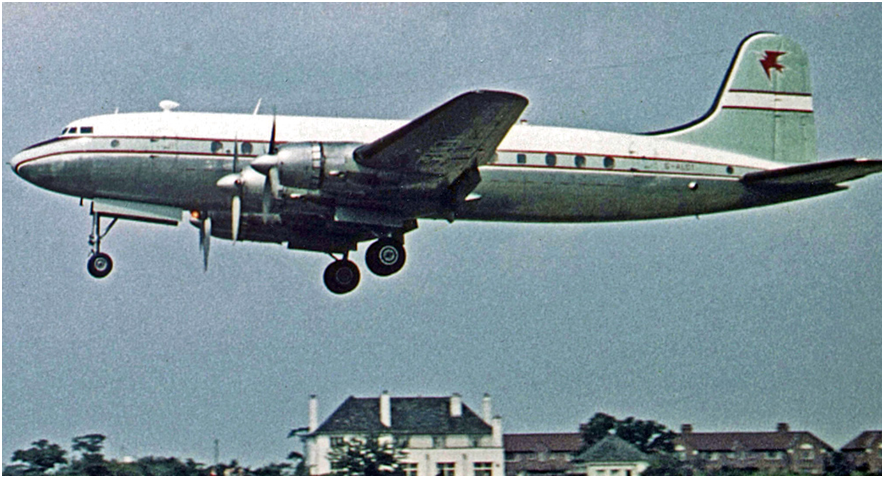
Hermes!
What does this word mean to you? The Greek god of transport? A Mail order delivery company? A French manufacturer of up-market scarves? Or one of Britain’s first pressurised post war airliners?
Well you can guess which one gets the Duxford Aviation Society vote. We have many iconic airliners in the British Airliner Collection but one of the rarest is the world’s only surviving Handley Page Hermes fuselage. Sadly this is all that’s left of one of the pioneering aeroplanes from the reborn British post-war airliner industry. This year our Hermes G-ALDG celebrates 70 years since it first flew from the company airfield at Radlett on 27 October 1949. Keith Bradshaw tells the story.
The Hermes and its Tudor counterpart from Avro were the first British airliners that were not derived from converted World War II bombers. That said, the Hermes wing could still be traced back to that of the Halifax heavy bomber. Towards the end of the war, thoughts at Handley Page were directed to making a transport aeroplane based on the Halifax. From these ideas came the Hastings transport, which was bought in large numbers post-war by the RAF. The natural offshoot from this design was a civilian airliner and thus the Hermes came into being. Similar to the Hastings, it was initially a tail-wheeled design powered by four Bristol Hercules piston engines.
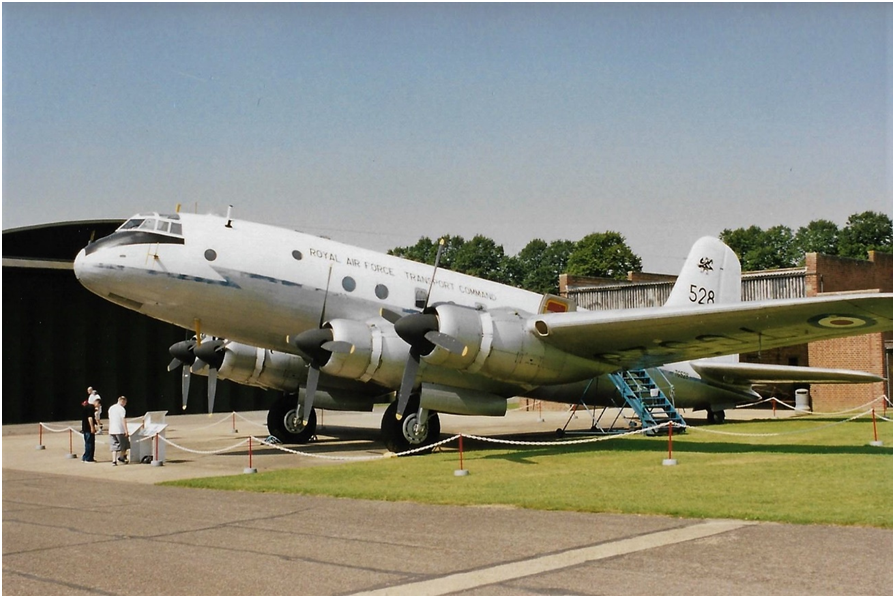
Two Hermes l prototypes were constructed with the first making its maiden flight from Radlett on 2nd December 1945. Sadly this flight was to end in disaster when flight control imbalance caused the aeroplane to become uncontrollable in pitch and it crashed killing both of the crew. Following this setback and the large RAF order for the Hastings, work was initially stopped on the second Hermes prototype. When work re-started it was decided to lengthen the fuselage fore and aft of the wing. Now named the Hermes ll this prototype would become the development aircraft for the final production version, the Hermes IV. The Hermes ll first flew on 2 September 1947, almost two years after the crash of the first aircraft. After Handley Page had finished using the aeroplane for trials it went to the Radar Research Establishment at RAF Defford and in time became the final Hermes flying ending its days in the first half of 1969.
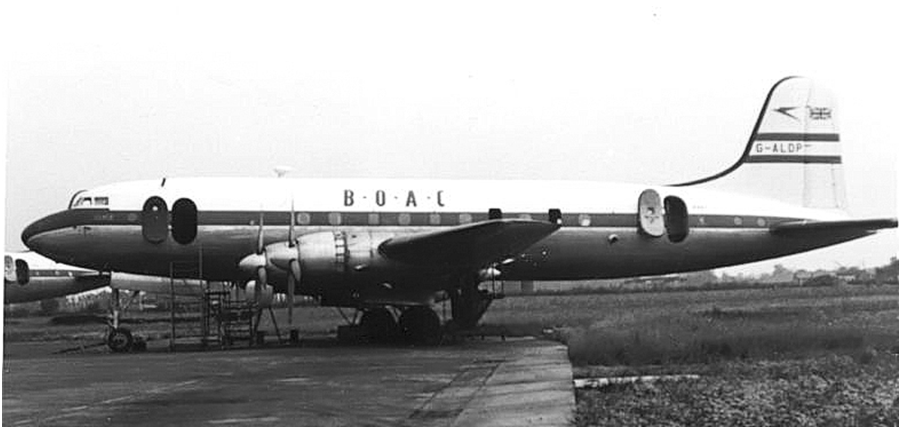
The trials conducted by the Hermes ll resulted in the Hermes lV production version having a new tricycle undercarriage, more powerful engines and a reduced fuselage length in front of the wing for balance reasons. BOAC, who had placed an order for 25, intended using a heavy forward galley. There was a proposed Turboprop Hermes lll but this project was shelved.
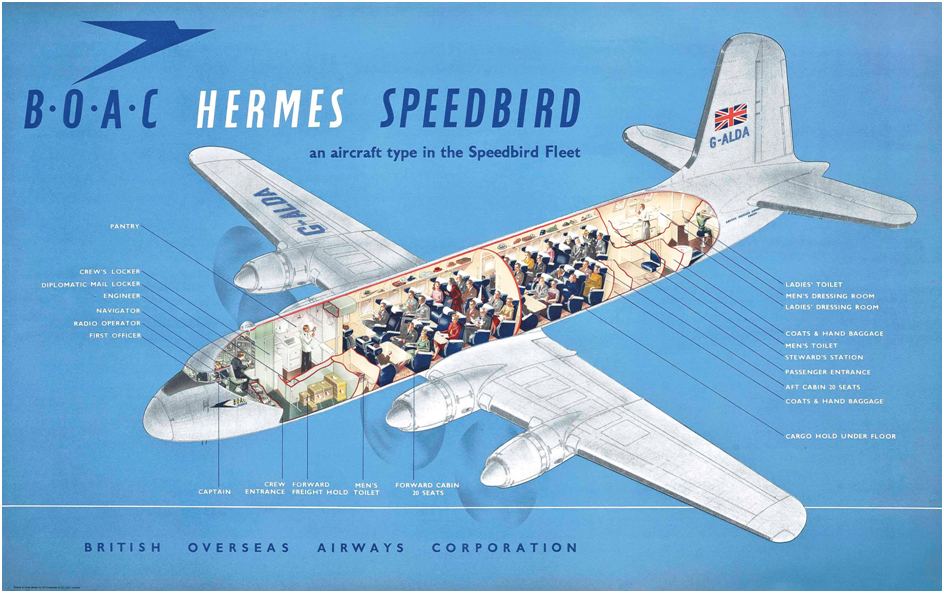
The first Hermes lV flew in September 1948. However it proved overweight when compared with the BOAC spec. This was be a problem as BOAC intended using the Hermes fleet on its African routes which always had a high payload. The additional weight would mean fewer passengers or less freight could be carried. This overweight problem affected the first four of the intended BOAC order and the airline refused to accept them for commercial service using them solely for crew training before returning them to Handley Page.
These four soon found a home with Airwork who were not so worried about the weight problem and they were put to work on government trooping flights across the globe. Handley Page did return to the concept of a Turboprop Hermes and built two Hermes Vs which were essentially Hermes lVs with Bristol Theseus Turboprop engines. Despite two years of development both aircraft, one of which had suffered a forced landing, were eventually broken up and the project cancelled.
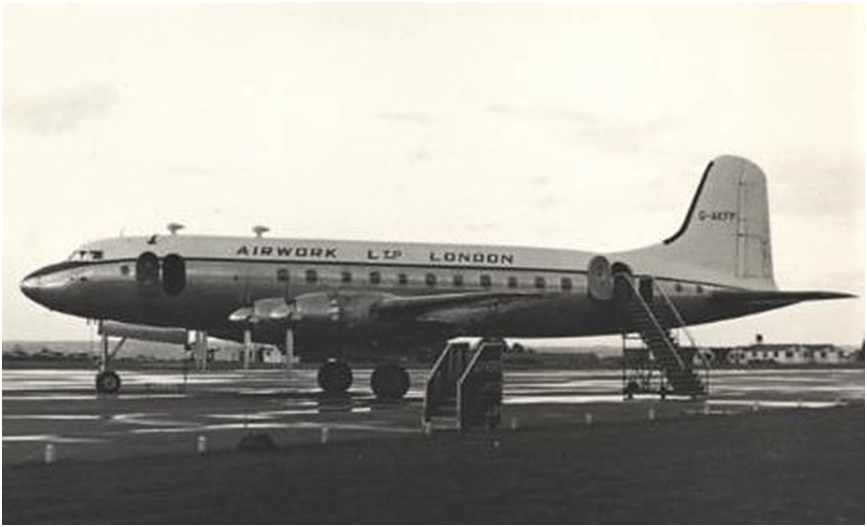
The first Hermes lV operated service with BOAC was on 6 August 1950 carrying 40 passengers from London to Accra. Of the 25 Hermes lVs originally ordered by BOAC only 21 eventually saw service with the airline. One of these was constructors number 8 registered G-ALDG and named Horsa by BOAC. This was to eventually become the last Hermes in existence. BOAC had problems with the Hercules engines on its Africa routes as they had had been modified to operate in the hot and high conditions of the African airfields. This was causing great strain and reducing their reliability. In 1952 a Hermes was sent to Farnborough for routine testing and was found to require modifications to the wing spar. This, coupled with the above engine problems and an idle fleet of reliable Canadair Argonauts which were being replaced by Comets, resulted in BOAC withdrawing all 19 surviving Hermes in favour of the Canadair machines. The fleet of Hermes were withdrawn and mothballed at London Airport to await buyers. Some of the aircraft saw a brief return to service in1954 when BOAC was short of aeroplanes during the grounding of their Comet fleet following the unexplained loss of two of the jets.
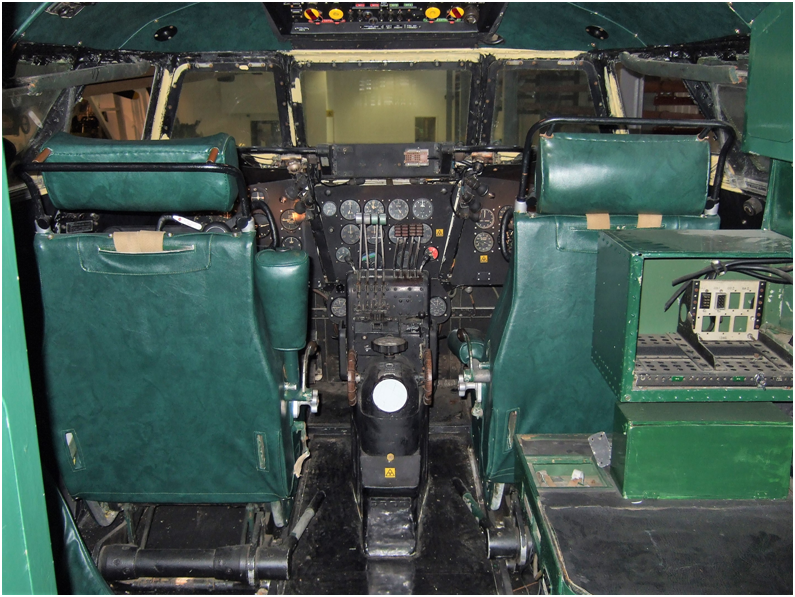
BOAC had no problem in selling off its fleet of nearly new aeroplanes and in 1954 LDG was bought by Airwork and operated on its trooping flight network from their base at Blackbushe. The regular flight from Blackbushe to RAF Fayid in the Suez Canal area was operated most nights of the week and its Hermes fleet was kept very busy serving this and other outposts in the Middle and Far East. Skyways also bought nine of the ex-BOAC aeroplanes and flew them on charters and trooping contracts for the British military.
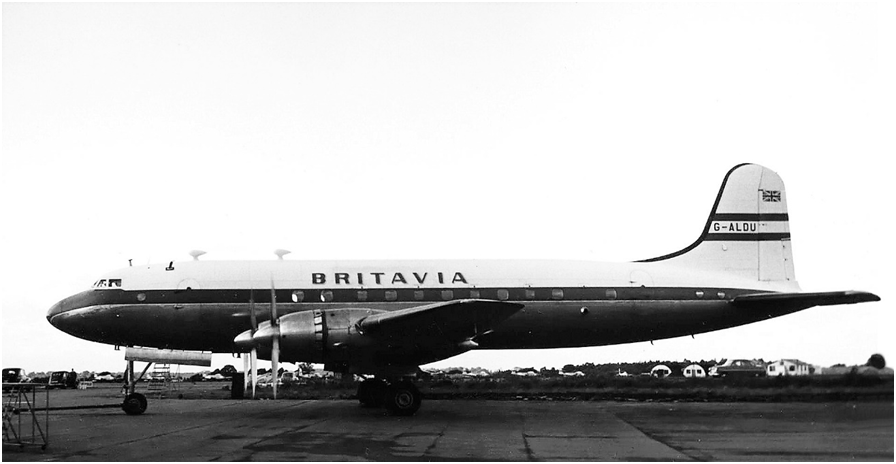
Another large operator was Britavia who using their fleet of six Hermes became the first operator of the type to fly the Atlantic when in late 1955 it operated a Blackbushe to New York charter. Skyways continued with the Hermes until 1959 when it merged with Silver City airways. The Hermes then continued flying under the Silver City banner until the end of 1962 when they were withdrawn or scrapped.
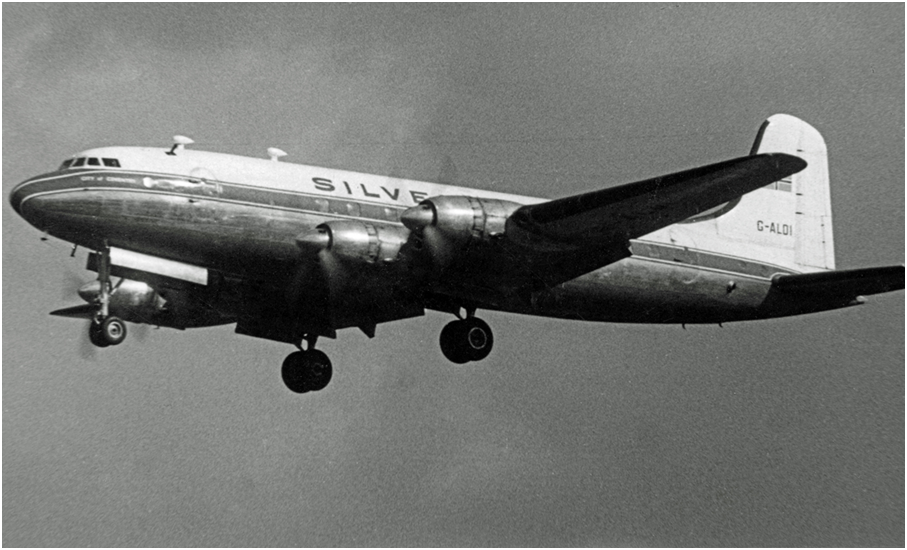
In 1959 Airwork who were then operating our LDG put her and two other Hermes up for sale at their Blackbushe base. Offered as 65 seaters with a large spares package they were snapped up by Falcon Airways with LDG being sold on to Silver City Airways at Manston. Before delivery to the Kent airfield she first came up to Cambridge for overhaul by Marshalls little knowing that her final resting place some years later would be just down the road at Duxford! The other two aeroplanes Falcon bought flew in their colours on various charters for just over a year before one of them ran off the runway at Southend after returning from Barcelona and ended up on the main London to Southend railway line. Following this incident Falcon lost its operators certificate and their one remaining Hermes was sold to Air safaris who at their peak operated five of the type.
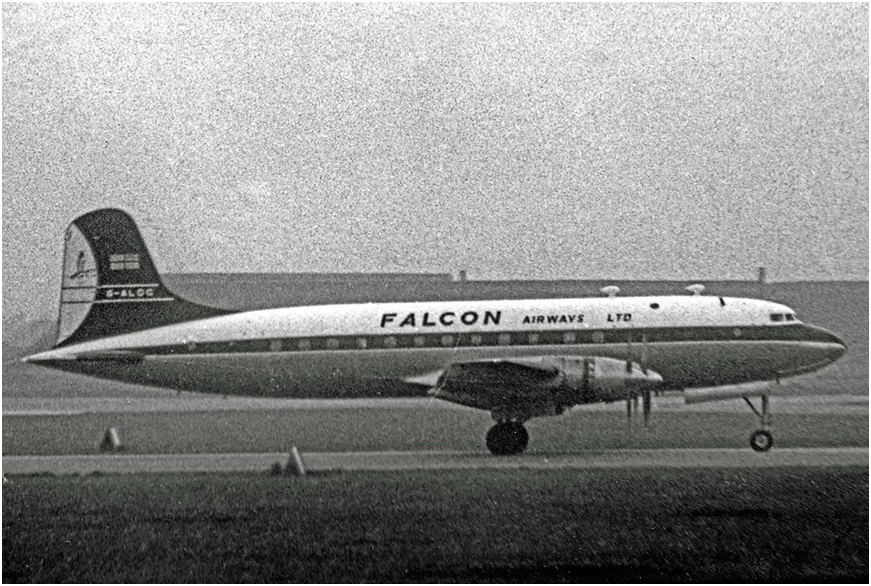
Their time as an airline was short. Having started operations in November1959 they had folded by October 1961with the fleet either being broken up or passed on. The honour of being the final commercial operator of the Hermes fell to Air Links who flew two examples out of Gatwick from 1962. One of their fleet was broken up for spares and it was left to G-ALDA to operate the last ever Hermes service when it arrived back at Gatwick from Bombay on 13 December 1964. However, the last Hermes carried on for another five years flying for the RAF before finally coming to rest in 1969.
Back in 1959 we saw LDG being delivered to Silver City but by 1962 she was withdrawn from use and parked at Gatwick airport, by this time Silver City had become part of BUA (British United Airlines). It was this airline that made the bold move to remove the wings and keep just the fuselage of LDG for use as a cabin crew training classroom and when BUA became part of British Caledonian it was again kept for this use and repainted in BCAL colours. However by the mid 1970s it was no longer required and was passed to the Gatwick Airport Fire Service for use in smoke evacuation training. When they had no further use for it and realising this was now the world’s only surviving Hermes fuselage she was donated to a combined group made up of the Duxford Aviation Society and the Handley Page Association, moving to Duxford in 1981. A 25 year restoration then took place to return the fuselage back to its BOAC days as Horsa, with the cabin showing the history of Handley Page plus what a Hermes looked like back in the 1950s. She is regularly open to the public so please come along had wish this unique old lady well in this her 70 year.
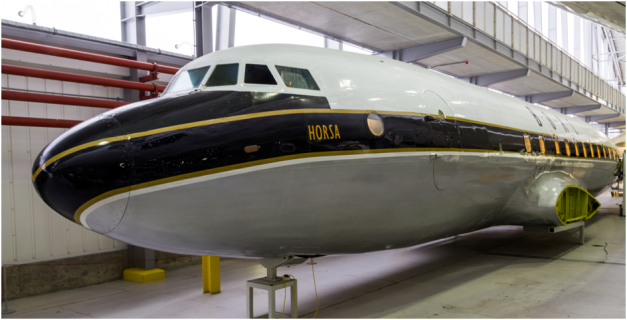
‘Till the next time, Keith
Registered Charity No. 285809